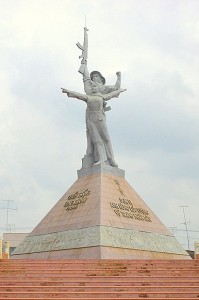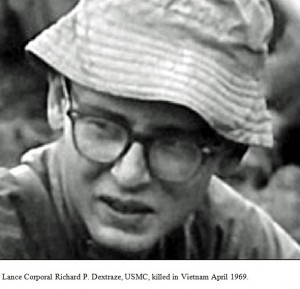
Vietnam Revisited
By 12570 Mike Kennedy
Forty years ago this spring, troops of the People’s Army of Vietnam mounted an offensive that would prove to be the final chapter in their seemingly never-ending quest to reunite their homeland. When Saigon capitulated to the PAVN forces at the end of April 1975, it marked the end of a bitter and enormously costly war that had lasted for almost exactly three decades. The North Vietnamese triumph also served as a humiliating denouement for their principal foreign opponent the United States, and in the years that immediately followed the war, Vietnam was something that a great many Americans wanted to forget.
As a nation, Canada stood aloof from the turmoil of Vietnam. Our government’s refusal to send combat troops to the war, and our willingness to offer refuge to draft dodgers and military deserters, both served as sources of bitter resentment for many of our neighbours to the south. It therefore seems somewhat ironic that one of the comprehensive and complete documentary accounts of that conflict would eventually be created by a Canadian.
More
 Originally produced 35 years ago, The Ten Thousand Day War is a 26-part documentary series that traces the history of the Vietnam War from its earliest beginnings in 1945, up to the final collapse of South Vietnam in the wake of the spring 1975 onslaught. The series was the brainchild of veteran journalist and broadcaster Michael Maclear, who immigrated to Canada in 1954, and subsequently enjoyed a long and successful career first with CBC and then with CTV. During the Vietnam War Maclear made several visits to that country, and was one of a very few Western journalists ever to be allowed access to the North.
Originally produced 35 years ago, The Ten Thousand Day War is a 26-part documentary series that traces the history of the Vietnam War from its earliest beginnings in 1945, up to the final collapse of South Vietnam in the wake of the spring 1975 onslaught. The series was the brainchild of veteran journalist and broadcaster Michael Maclear, who immigrated to Canada in 1954, and subsequently enjoyed a long and successful career first with CBC and then with CTV. During the Vietnam War Maclear made several visits to that country, and was one of a very few Western journalists ever to be allowed access to the North.
Vietnam had been a French colony since the 1880’s, and following France’s defeat in the Second World War, the country was occupied by the Japanese. It was during this time that the struggle for national independence was begun by the Communist Viet Minh party, under the leadership of Ho Chi Minh. Following a disastrous defeat at Dien Bien Phu in 1954 the French exited Indochina altogether, leaving Vietnam essentially a divided country with the Communists ruling the North, and a supposedly democratic government in control of the South.
American military involvement in Vietnam began quietly and gradually, initially taking the form of military advisors who main role was to offer guidance to South Vietnamese troops seeking to contain Communist aggression. Following the Gulf of Tonkin incident in 1964 the American presence in Vietnam expanded rapidly, reaching approximately 500,000 troops a couple of years later. Time passed, casualties mounted dramatically, and it gradually became clear that no decisive victory was in sight. Concurrent with these developments, the war became hugely unpopular in the United States, and the resulting groundswell of public opposition put enormous pressure on the administration of President Richard Nixon to extricate his country from the morass, and hand responsibility for fighting the Communists over to the ill-prepared South Vietnamese.
Using film footage from the Americans and North Vietnamese, The Ten Thousand Day War provides viewers with an incisive and hard-hitting look at the pivotal events of that conflict. The series features interviews with key military and diplomatic players from the war, including U.S. Generals William Westmoreland and Alexander Haig, former Secretary of State Dean Rusk, and former Secretary of Defense Clark Clifford. Featured prominently from North Vietnamese side is former soldier and diplomat Ha Van Lau, who conducts his interviews in French. Individual episodes also include some of the most iconic images of the war, such as South Vietnamese police chief General Nguyen Ngoc Loan executing a Viet Cong suspect by firing a pistol point-blank at his head; nine year-old Kim Phuc running down a road naked and screaming after her village was bombed with napalm in 1972; and the ecstatic reunion of U.S. Air Force pilot Robert Stirm and his family following Stirm’s release from six years of captivity in North Vietnamese prisons.
If there is any issue that is not adequately addressed in this series, it may be the lack of any mention of Canadian participation in the war. Although this country’s government refused to send troops to aid the Americans, it is nonetheless estimated that anywhere between 20,000 and 40,000 Canadians crossed the border to volunteer for service with the U.S. forces. Worth noting is the fact that by doing so all of them violated the Foreign Enlistment Act, originally passed in 1937 to deter Canadians from fighting in the Spanish Civil War. Of those Canadians who volunteered for Vietnam at least 103 are known to have died, and their names and legacy are commemorated on the North Wall, a privately-funded monument erected in Assumption Park in Windsor in 1995.
One noteworthy name on the North Wall is that of Lance Corporal Richard P. Dextraze of the U.S. Marine Corps, killed in April 1969 in Quang Tri province, and posthumously awarded the Silver Star for gallantry in battle. Born in Montreal in 1947, Lance Corporal Dextraze was the son of Jacques Dextraze, the legendary veteran of WW II and Korea who rose to become Canada’s CDS in the mid-1970’s.
Apart from this one unfortunate omission, The Ten Thousand Day War otherwise provides an excellent and in-depth analysis of one of modern history’s longest and most misunderstood conflicts. The youngest veterans of the Vietnam war are today well into their 60’s, but the lessons they learned a half-century ago in the jungles of Southeast Asia played an instrumental role in driving the massive transformation of the U.S. armed forces that took place in the 1980’s and 1990’s. This series is highly recommended for anyone with an interest in learning more about the causes of the Vietnam War, the pivotal events of that conflict, and most importantly, what it was really like to be there on the ground.
The complete Ten Thousand Day War series is available on DVD, and can be ordered on-line at www.chapters.ca or www.amazon.ca.
Ed note: On April 9, 1975, the PAVN forces reached Xuân Lộc, which was apparently the last line of defence outside Saigon. The Battle of Xuân Lộc began on April 9 and was the last major battle of the war, ending of course in the North Vietnamese victory. Coincidentally (or maybe not) April 9 was also the date on which the Canadian assault on Vimy Ridge began in 1917.



